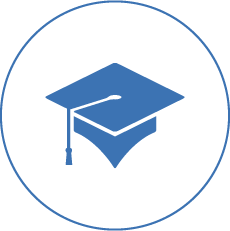Modern education is dependent on the money invested in it; investments in educational technologies are still increasing despite tight budgeting. According to CB Insights (a database that regularly analyzes and reports on venture capital, private capital, investment and new high-growth industries), funding for educational technology increased till 55% in 2014. In its report, Global Industry Analysts (GIA) predicts that in 2015 the global e-learning market will reach $ 107 billion.
We note one detail: modern time is often called the Information Age, but no one calls it the Knowledge Age. Information and knowledge are not equal. In order to become knowledge, information must first be processed: received, sorted, analyzed, integrated and saved.
We offer you five major trends in educational technologies that are gaining increasing popularity:
- Corporate training online. Realization that convenience, adapting to the needs and wishes of students, the use of technical devices that allow studying anywhere and anytime, are getting important, has led to an active rise in this field.
By the way, mass courses are no longer among schoolchildren and students through a certain mediocrity, triviality and didacticism of the proposed information and the means of its presentation. So, the platform for EIT preparation - School "Knowledge-online" is at your disposal. - Measuring competencies. In combination with the surge in online corporate learning, 2015 expects increased attention to find the best ways to assess competencies and measure individual learning progress. Clayton Christensen Institute demonstrated observations that it is important that all parts of modular training are harmoniously integrated. Indeed, it is necessary that the knowledge should not be separate sectors in the mind of the student.

The use of information and skills in various disciplines helps in solving problems, participating in contests and competitions, because the broad outlook indicates a higher level of training. It requires effective ways to assess knowledge and track the dynamics of student learning in order to guarantee high-quality information exchange between each component of the training program. - Alternative learning styles. Education follows fashion trends, so design makes sense. Every year or month, new styles and trends, the purpose of which is to diversify the process of learning, appear. In the context of this trend, plural sight has led to a creation of Code School. Code School offers a unique approach based on an alternative learning style: more exciting, interesting and effective than just video.
With CodeSchool, users watch a short video, then stop and practice what they have learned with the help of a series of interactive coding and rating tasks. As the material progresses, students earn points and badges that individually guide the course of study and the progress of each student. - Competency based online learning. While competency-based learning and distance learning (online learning) are not new, their combination creates a revolutionary approach to education. Michelle R. Wise and Clayton M. Christensen promise “great explosive potential” to online competency-based learning because it includes correct learning model, but also the right technologies, customers, and business models.
Wise and Christensen continue to explain that competency-based online learning providers "can combine training modules cost-effectively due to their flexibility and adaptability to a changing labor market." They do it by means of breaking up learning not into courses or even subjects, but on competence, freeing learning from the limitations of traditional institutions and methods. Such learning type has a greater impact on the future life of the student, because it increases the prospect of successful employment.
Inverted learning technology. Information Week identifies flipped learning technology as another key trend in educational technology in 2015. The Flipped class is a form of blended learning, where students watch video lectures outside the classroom, study content online, and then do homework in the classroom directly under the guidance of a
Although, the main goal of educational technology designers is not to maximize enrichment and promotion to achieve commercial goals, everyone cares about their success. Any activity loses its value if it does not benefit the society, because education is emotions and soul.

